Man Without Fear: David Mack, Daredevil, and the Bounds of Difference (Part Four)
/If Project Superior pulls the superhero genre into the space of independent comics, then a range of recent Marvel and DC projects have pulled the independent and avant garde comics artists into the realm of mainstream comics publishing, again via the figure of the superhero. Here, again, they seek to motivate the experimentation through appeals to character psychology. In this case, DC invites us to imagine what its superhero sagas would look like if they were produced by the denizens of the Bizarro World, noted for their confusion and often reversal of the norms of human society.

Matt Groenig (The Simpsons) shows the Justice League characters as being blown out of the pipe of Bizarro Superman, helping to set up the premise of the collection as a whole. If Project Superior is drawn towards forms of abstraction, the Bizarro comics have more room for the ugly realism that we associate with certain strands of indie comics, a tendency to deflate the heroic pretensions of the characters through various forms of the grotesque, as in this image by Tony Millionaire,
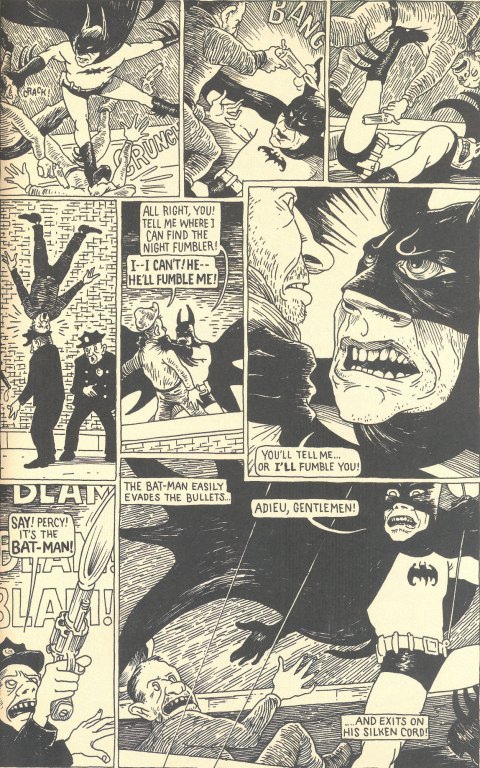
or the everyday, as in these images by Dave Cooper,
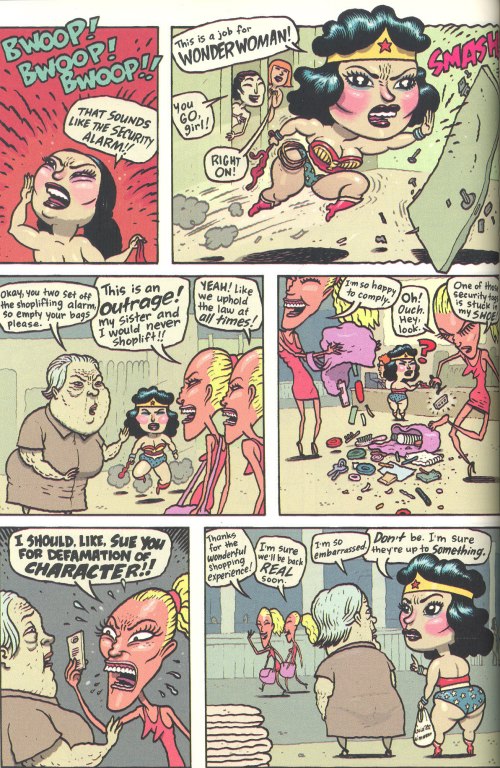
Danny Hellman
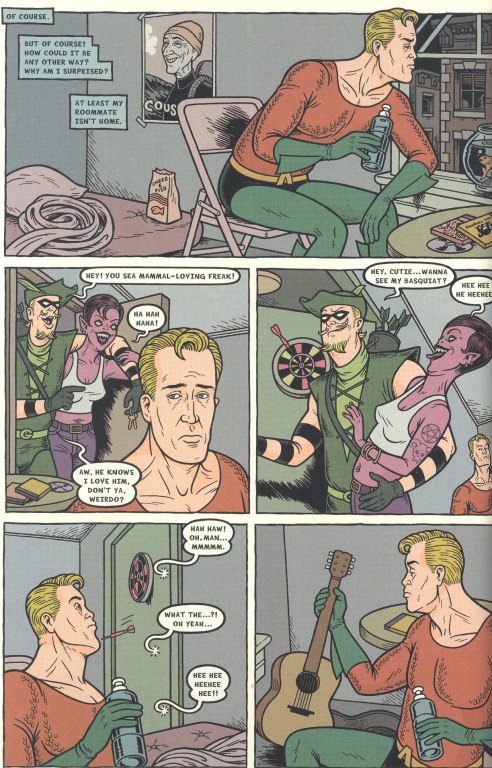
and Leela Corman.
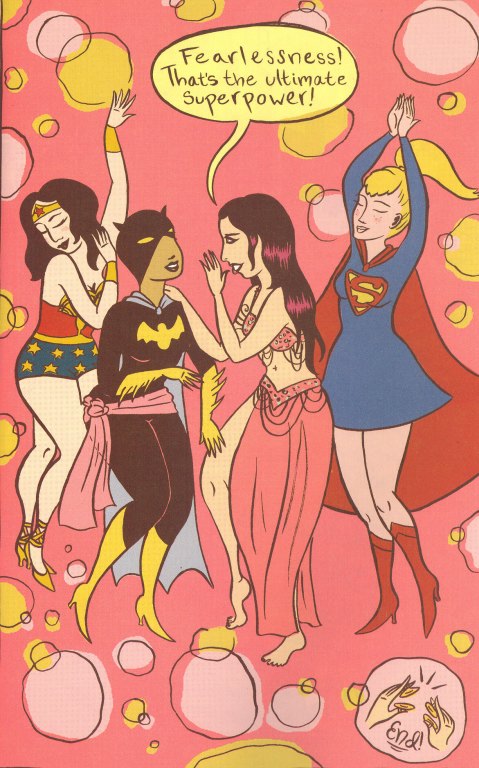
These superheros are very down-to-earth, their human faults and foibles on full display; the heroes are often shown off-duty doing the kinds of things their readers regularly do. These images depend on our pre-existing relationship with the superheros for much of their pleasures. Project Superior depended on generic versions of the superhero, while these stories work with Batman, Wonder Woman, Aquaman, and the others, with the artists incorporating just enough of the familiar iconography and color palette to make it easy to recognize which characters are being evoked and spoofed.
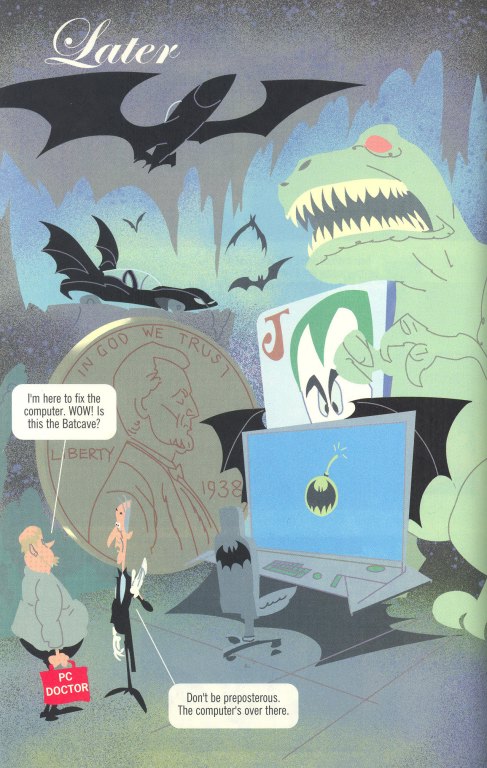
Anyone who has read a Batman comic will no doubt recognize much of the debris in the Bat Cave depicted in this drawing by Kylie Baker, yet his cartoonish style is very different from what we would expect to see within the Batman franchise itself. This Jason Little page depicts the superheroes as bath toys, suggesting that they only come alive in the imagination of the child who is playing with them.
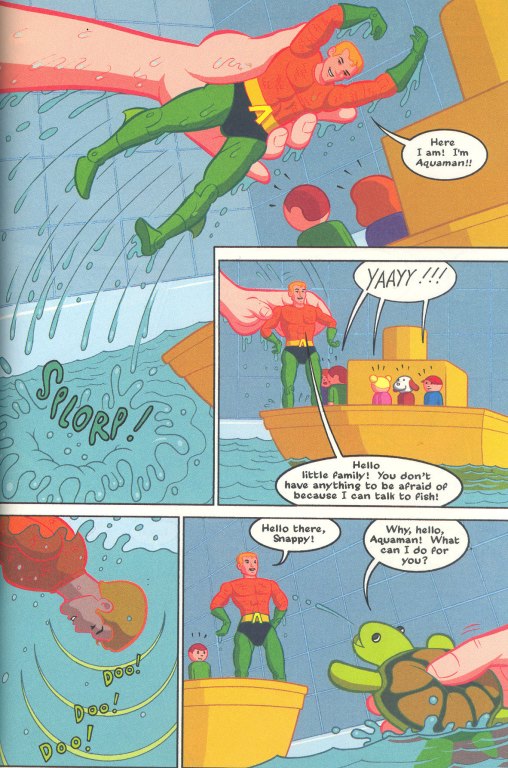
Mack himself relies on the image of superhero action figures, in this case of Marvel characters, in Wake Up, as another way into the tortured imagination of his young protagonist.

Mack's work involves a fascinating blurring of the distinction between graphic novels and artist books. Artist books are artworks which are intended to explore the nature of the book as a genre. Sometimes, they are printed in limited editions. More often, they are one of a kind items. They play with the shape, texture, and format of the book in ways that are idiosyncratic to the individual artists. They often are focused on the materiality of print culture rather than on the content of the book.
Nothing could contrast more totally with the cheaply printed, mass produced and circulated comic book. Historically, the art work which went into producing the comic was presumed to have no value and was often discarded once the book has been printed, much as we might toss the manuscript once the words have been set into type.
Yet, Mack is very interested in creating pages which are artworks on their own terms. He deploys innovative techniques and unexpected pigments (such as coffee grinds) to construct his images. Often, he layers physical and material objects onto the page so it is not a flat representation but something with its own shape and feel. Mack publishes books which remove these images from their context in the unfolding stories of his graphic novels and call attention to them on their own terms as artist's constructions, often describing and documenting the techniques which went into their production. His process has been documented in a film called The Alchemy of Art, which shows him creating some of the images contained within Vision-Quest and includes his comments on the process. Here, the printed comic becomes almost a byproduct of his creative process which is concentrated on the production of beautiful one-of-a-kind pages.
Throughout Vision-Quest, Mack calls attention to the often invisible but always important framelines and buffers in his layout by using physical materials rather than drawn lines to separate out his panels. In other instances, he glues objects such as leaves or bird's wings directly onto the page in what amounts to the graphic novel equivalent of Stan Brakhage's Mothlight.
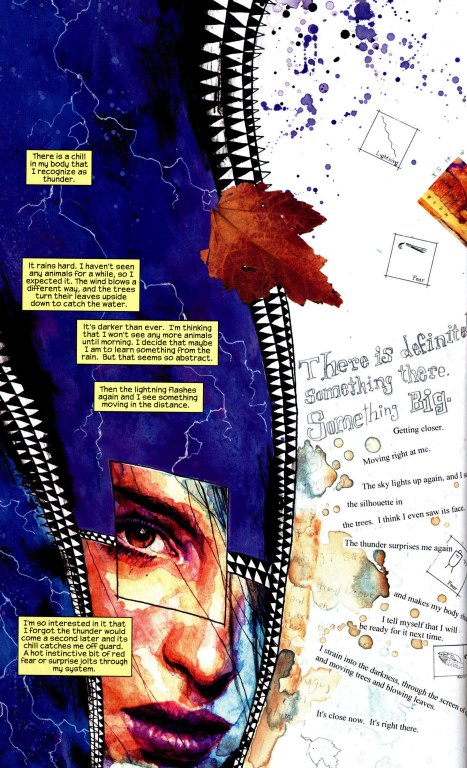
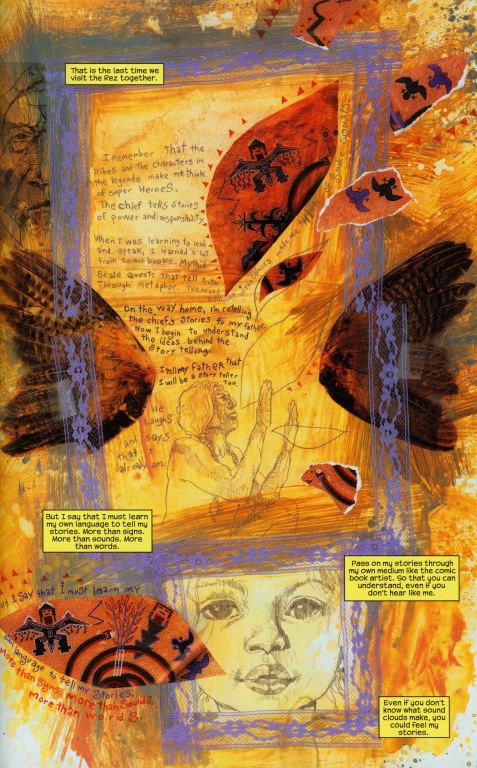
In other cases, he creates designs which play with the orientation of the page, demanding that we physically turn the book around in order to follow the text or the action.
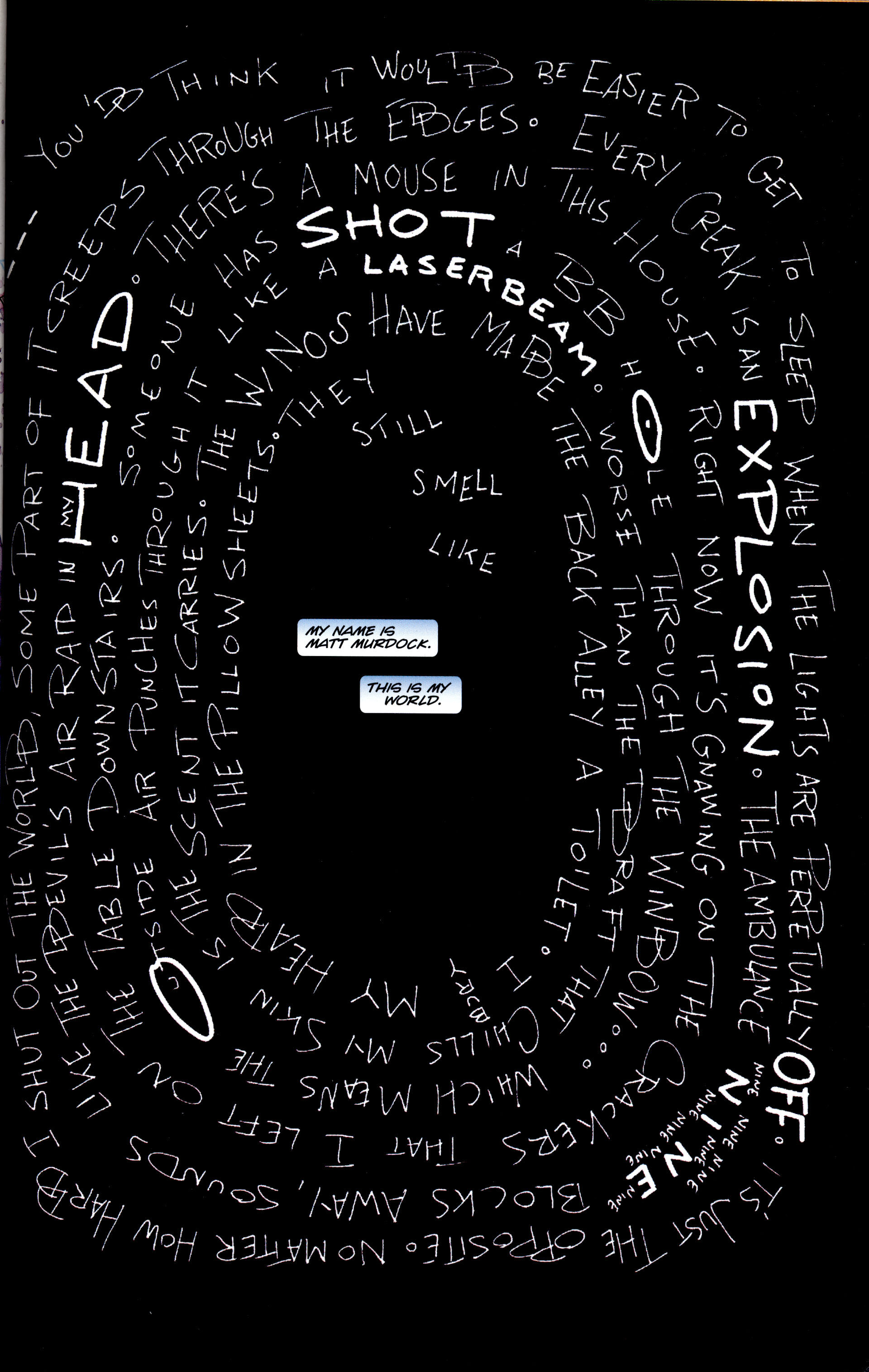
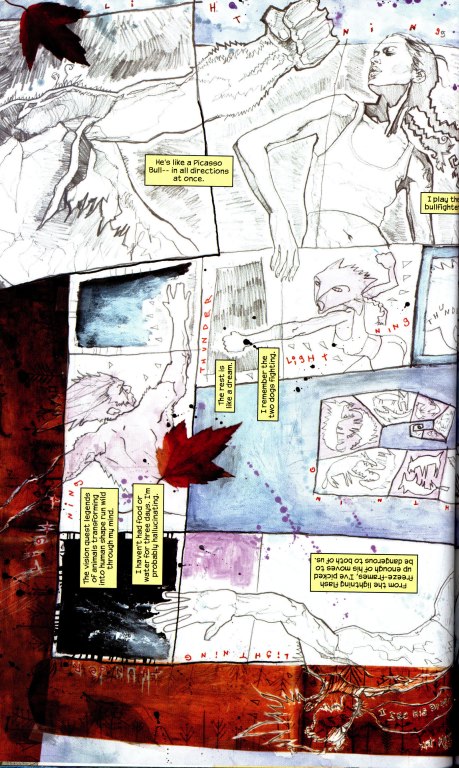
In his own graphic novel series, Kabuki, he plays with the notion of origami -- encouraging the reader to think of the page as something which can be folded and sculpted rather than simply part of the printed book.
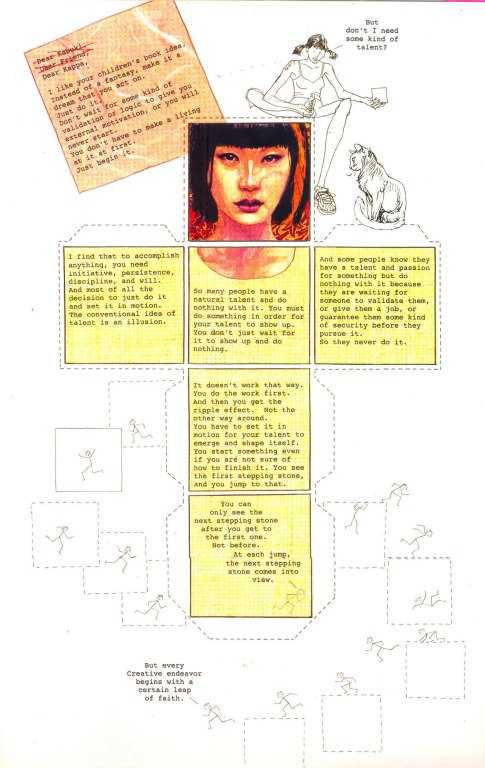
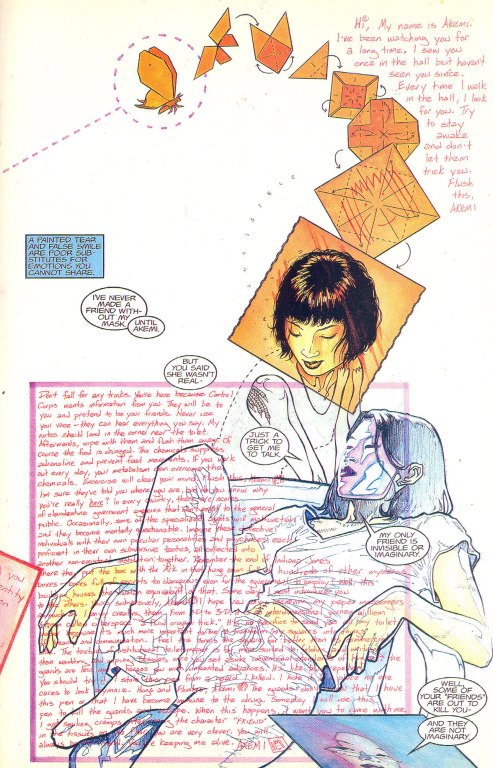
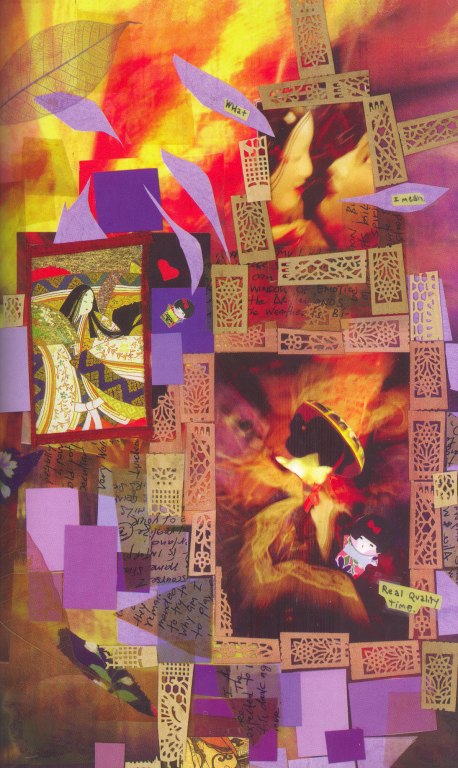
In each of these cases, Mack builds on practices associated with the art book movement, but deploys them in relation to mass produced artifacts. He wants us to remain conscious that we are holding a printed object in our hands that has particular properties and expects particular behaviors from us. Here, again, he has both built upon and broken out of the visual language of mainstream superhero comics.
This is not what a superhero comic is "supposed to look like", even if it is telling the kind of story which might be readily accepted if communicated through a different style or mode of representation. Exploring the ways that Mack pushes against these expectations even as he operates at the heart of one of Marvel's cash cow franchises is what helps us to understand the "bounds of difference." And in the process, it helps us to understand how diversity operates within a genre which has otherwise come to dominate the comics medium.

